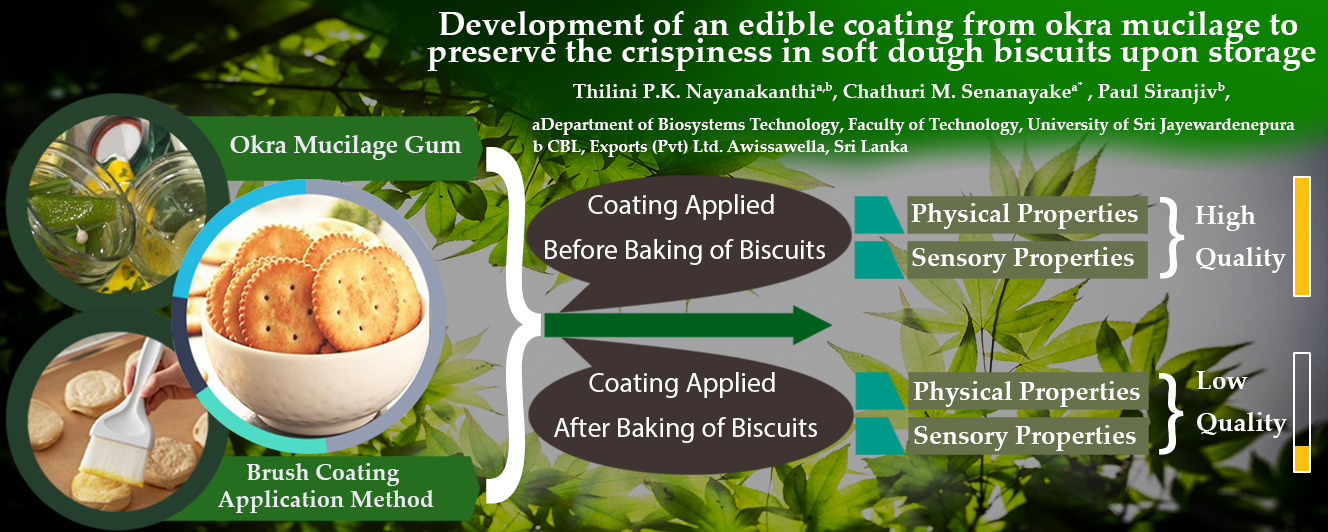Development of an Edible Coating from Okra Mucilage to Preserve the Crispiness in Soft Dough Biscuits Upon Storage
DOI:
https://doi.org/10.31357/ait.v1i2.4881Abstract
Baked food products are considered to be one of the most popular processed foods in the world. Among all the bakery products, biscuits are the most frequently consumed snack food item. There is a vast and diverse market for biscuits as a leader in ready-to-eat baked goods. Biscuits have long shelf life than other bakery products when stored under proper conditions. But immediately after exposure to the air by opening or damaging the package, biscuits absorb moisture from the air and reduce its crispiness of the biscuits. According to the market survey results, the highest number of respondents (53.7 %) suggested developing an edible coating for biscuits to prevent the loss of crispiness in biscuits upon storage. As well as 98.5 % of respondents prefer edible coatings developed using natural sources. Polysaccharide-based edible coatings maintain the physicochemical, microbiological & sensorial properties of the food. Therefore, okra mucilage was used as the main ingredient for edible coating preparation for biscuits. The coating was applied on biscuits with different coating methods, different baking stages and stored in different environmental conditions to identify the efficiency of the coating. According to the results, a coating applied before the baking stage displayed better moisture barrier properties than that of the coating applied after baking in controlled, semi-controlled, and normal atmospheric environmental conditions. It's responsible for the reduction of moisture absorption of biscuits upon storage

Downloads
Published
How to Cite
License
Copyright (c) 2021 Chathuri M. Senanayake, Thiini Nayanakanthi, Paul Siranjiv

This work is licensed under a Creative Commons Attribution-NonCommercial-NoDerivatives 4.0 International License.
The Authors hold the copyright of their manuscripts, and all articles are circulated under the terms of the Creative Commons Attribution License, which permits unrestricted use, distribution, and reproduction in any medium, as long as that the original work is properly cited.
The use of general descriptive names, trade names, trademarks, and so forth in this publication, even if not specifically identified, does not imply that these names are not protected by the relevant laws and regulations. The authors are responsible for securing any permissions needed for the reuse of copyrighted materials included in the manuscript.




